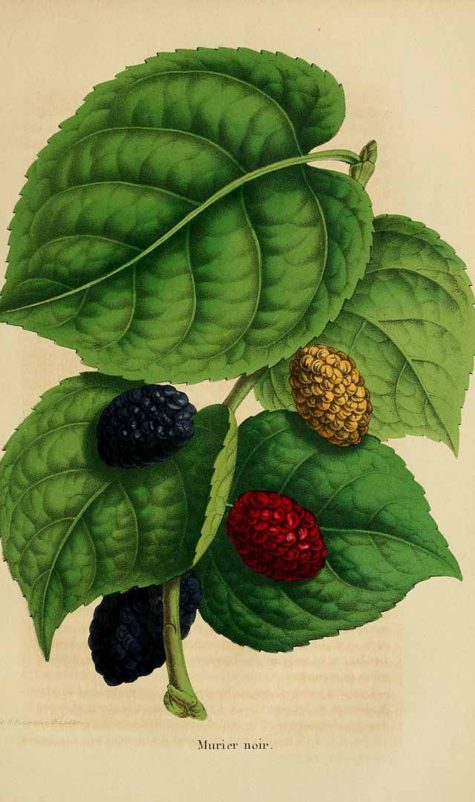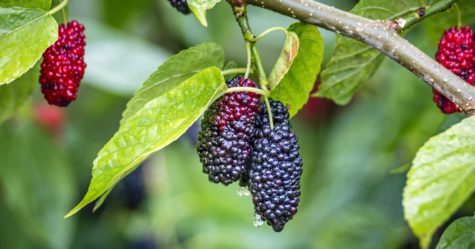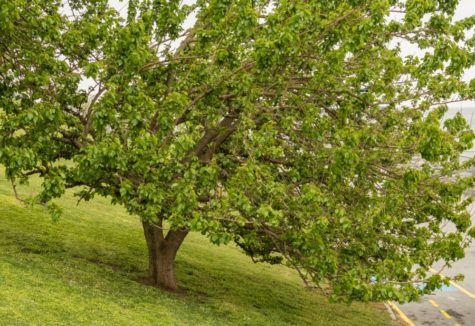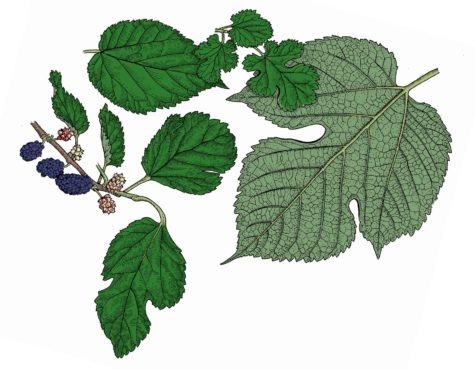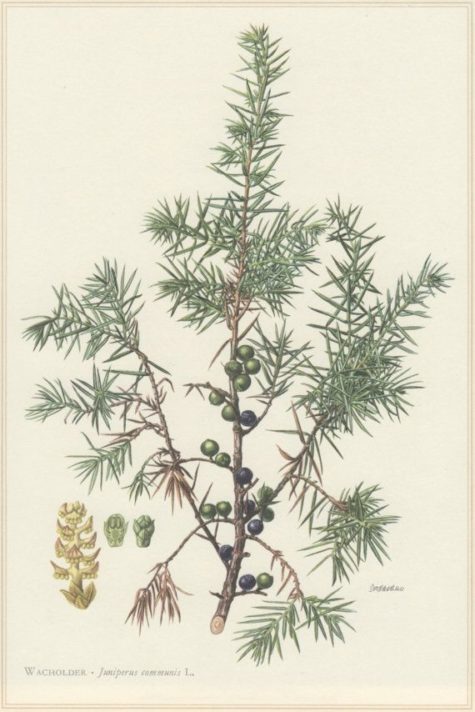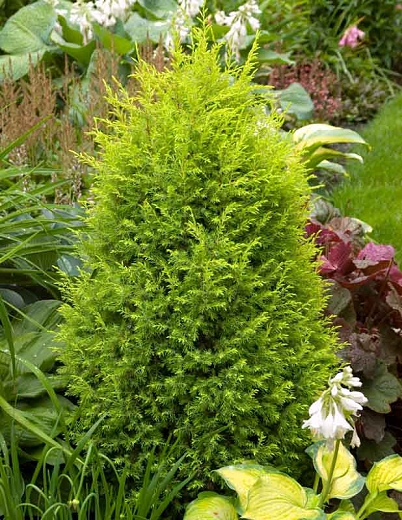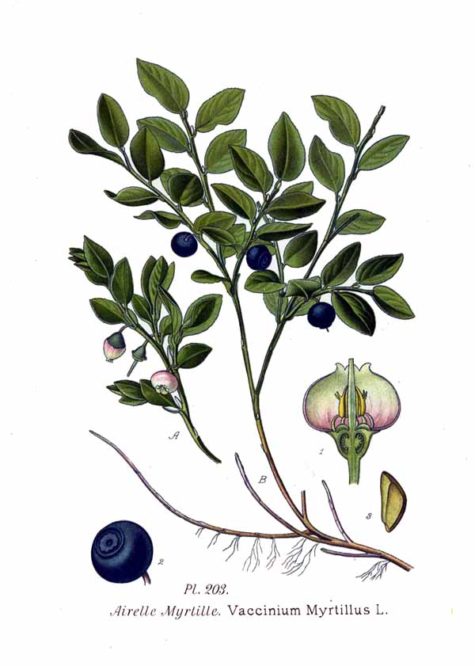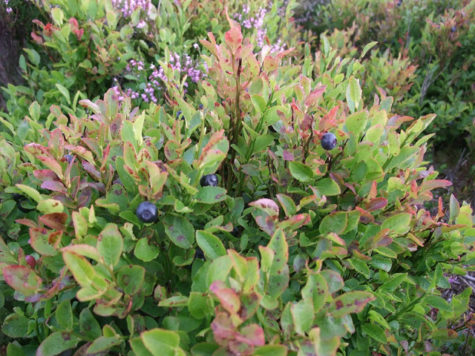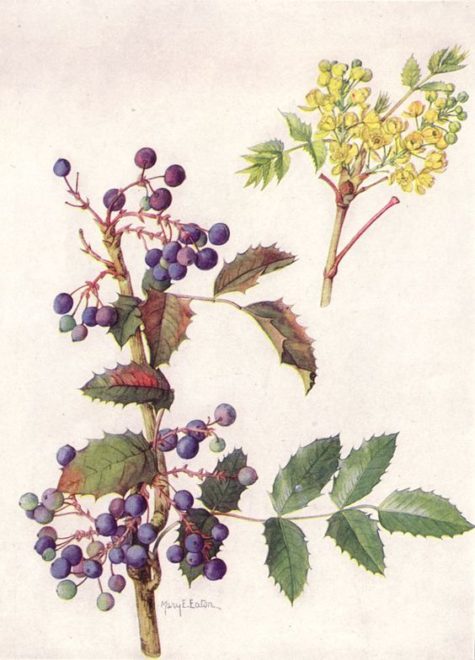Berries For Healing
Mulberry
- Scientific Name: Morus nigra, Morus alba
- Plant Family: N.O. Artocapaceae
- Parts Used: Fruit, Bark and Root Bark
- Actions: Fruit – Antioxidant, Tonic, Laxative, Antidiabetic : Bark – Anthelmintic,
Black Mulberry is used as a laxative and to treat runny nose (rhinitis). A molasses made from black Mulberry is used for inflamed mouth sores during cancer treatment. Black Mulberry fruit also contains pectin, which might act as a laxative to help stool pass through the bowels.
Especially wholesome for those who are liable to heartburn, because it does not undergo acetous fermentation in the stomach. In France Mulberries are served at the beginning of a meal. Among the Romans the fruit was famous for maladies of the throat and windpipe.
The powdered leaves of the White Mulberry are most commonly used for medicine. The fruit can be used for food, either raw or cooked. The white Mulberry is sweet but bland, unlike the more intense flavor of the red Mulberry and black Mulberry.
White Mulberry is often tried in order to help treat diabetes. It is also tried for treating high cholesterol levels, high blood pressure, the common cold and its symptoms, muscle and joint pain such as from arthritis, constipation, dizziness, ringing in the ears, hair loss, and premature graying.
White Mulberry is native to China and is the food of silkworms. It was introduced into the United States in colonial times, during an attempt to establish a silk industry.
According to Chinese Medicine, Mulberry has a cooling thermal nature, sweet flavor, and builds the yin fluids and blood. It moistens the lungs and gastrointestinal tract, strengthens the liver and kidneys; treats wind conditions, including vertigo and paralysis.
Beneficial for blood deficiency signs such as anemia, prematurely gray hair, irritability, insomnia, and constipation from fluid dryness. It is also used in treating stomach ulcers, diabetes, dry cough, ringing in the ears and poor joint mobility.
At one time in the West, Mulberries were highly regarded as a general tonic for the whole system, which corresponds to some degree with the Chinese view of their tonic action on the kidneys, liver, and blood.
Mulberries are refreshing and have laxative properties and are well adapted to febrile cases. In former days, they used to be made into various conserves and drinks.
Mulberry was most often used for the preparation of a syrup, and is employed to flavor or color any other medicine. Syrupus Mori is a dark violet or purple liquid, with a faint odor and a refreshing, acid, saccharine taste. In amount of natural fruit sugar, the Mulberry is surpassed only by the Cherry and the Grape.
Mulberries are sometimes used in Devonshire for mixing with cider during fermentation, giving a pleasant taste and deep red color. In Greece, also, the fruit is subjected to fermentation, thereby furnishing an inebriating beverage.
Mulberries are full of nutrients and vitamins. A cup of raw Mulberries contains only 60 calories, making them a light and tasty snack, yet providing the nutrients necessary for the body.
Mulberries contain carbohydrates that convert sugar into glucose, thereby providing energy to the cells. Consuming Mulberries increases your iron intake and ensures ample supply of oxygen to the tissues.
Mulberries are rich in Vitamin K and C. Vitamin C increases tissue strength and boosts collagen synthesis. Vitamin K helps in bone tissue development and is an essential component for blood clotting.
They also contain Riboflavin (also known as B-2), which protects your tissues from free radicals and helps in transferring oxygen throughout the body.
Consuming any form of the Mulberry fruit – whether the fruit itself, its powder, or juice – is beneficial to you. You can even apply Mulberry extracts on your skin.
Appearance
The Common Mulberry is a handsome tree, 20 to 30 feet high, of rugged, picturesque appearance, forming a dense, spreading head of branches usually wider than the height of the tree, springing from a short, rough trunk.
Mulberries are related to figs and breadfruit. Technically, Mulberries are not single berries. Each Mulberry is a collection of berries on a common pulpy receptacle.
There are few trees better able to withstand the debilitating effects of the close atmosphere of small town gardens. Varieties include:
- White Mulberry (Morus alba) native to east Asia.
- Red Mulberry (Morus rubra) native to North America.
- Black Mulberry (Morus nigra) native to southwest Asia.
- Texas Mulberry (Morus microphylla) native to the United States and Mexico.
- Chinese Mulberry (Morus australis) native to the Southeast Asia.
- African Mulberry (Morus mesozygia) native to south and central Africa.
- French Mulberry (Callicarpa Americana) – a shrub 3 to 6 feet high, with bluish flowers and violet fruit, but the species is too tender for any but the mildest parts of Great Britain.
It is by no means unusual for a Mulberry tree to produce leaves of several different shapes, or differing considerably in outline.
The Chinese White Mulberry, cultivated in other countries as food for the silkworm, is even more variable in leafage than the Common Mulberry, and quite a score of different forms of leaf have been gathered from a single tree, and several from one shoot.
Both species contain in every part a milky juice, which will coagulate into a sort of Indian rubber. This has been thought to give tenacity to the filament spun by the silkworm.
While definitely helpful, Mulberry trees are notorious for their pollen production, which can well exceed the admissible count of 1500 in the spring season. It was precisely for this reason that the city administration of Tucson, Arizona, banned it in 1984. The city of Las Vegas, Nevada, followed suit citing the same reason in 1991, and El Paso, Texas, followed a year later in 1992. While some of these cities are contemplating doing away with this ban, that is bound to take some time as the risk involved in pretty high. Continue reading
Juniper
- Scientific Name: Juniperus, communis
- Plant Family: Pinaceae
- Parts Used: Berries, leaves and twigs, bark
- Constituents: Rich in essential oil which contains monoterpenes and sesquiterpenes, invert sugar, flavone glyosides, resin, tannin, organic acids
- Actions: Diuretic, Stimulant, Carminative, Emmenagogue, Antimicrobial, Anti-rheumatic, Abortifacient
- How does it work? Juniper berries contain chemicals that might decrease swelling. It might also be effective in fighting bacteria and viruses. Juniper might also increase the need to urinate.
Varieties:
There are over sixty Juniper species, but the one which yields edible fruits in Britain is Juniperus comunis. In the Americas, Eastern Red Cedar, Juniperus virginiana, can be used in much the same way. A detailed account of the herbal properties of Eastern Red Cedar can be found here.
Among the varied forms, there are dense, columnar trees; medium sized, rounded shrubs; irregular bush forms; and creeping prostrate types. Irish and Swedish junipers are tall, narrow, and quick growing; the Greek and Chinese are very compact, slow growing. Pfitzers are irregular, massive types. California Juniper may reach heights of 40 feet, and shore Juniper and japonica are spreading ground covers.
Notes and Cautions:
One useful guide to the identification of Juniper is the apple-like fragrance that the needle-shaped leaves give off when crushed.
Women who are pregnant, wish to become pregnant, or who are nursing a child should not eat Juniper fruits. Due to their action on the kidneys, Juniper berries should be avoided by persons with kidney disease.
Don’t confuse Juniper berry oil with cade oil, which is distilled from Juniper wood (Juniperus oxycedrus).
The Basics:
A strong aromatic scent emanates from all parts of the shrub. Berries taste slightly bitter-sweet, fragrant, and spicy and are generally used to make a tea that is good for flatulence and indigestion, to promote the flow of urine.
Juniper branches can be used as a fumigant and were commonly burned in public places in times of plague and pestilence. This was still the practice in French hospitals a century ago during the smallpox epidemic of 1870.
Juniper berries make an excellent antiseptic in conditions such as cystitis. The essential oil present is quite stimulating to the kidney nephrons and so this herb should be avoided in kidney disease. The bitter action aids digestion and eases flatulent colic. It is used in rheumatism and arthritis. Externally it eases pain in the joints or muscles.
Some people take Juniper by mouth for problems with digestion, urinary tract infections (UTIs), and kidney and bladder stones along with many other conditions. Some people apply Juniper directly to the skin for wounds and pain in joints and muscles.
In foods, Juniper berry is often used as a condiment. The extract, oil, and berry are used as flavoring ingredients in foods and beverages. In manufacturing, Juniper extract and oil are used as fragrances in soaps and cosmetics.
Bilberry
- Scientific Name: Vaccinium myrtillus
- Plant Family: N.O. Vacciniaceae
- Parts Used: The ripe fruit. The leaves.
- Actions: astringent, diuretic, tonic, antiseptic,antibacterial
Varieties:
- V. arboreum, or Farkleberry. This is the most astringent variety, and both berries and root-bark may be used internally for diarrhoea, chronic dysentery, etc. The infusion is valuable as a local application in sore throat, chronic ophthalmia, leucorrhoea, etc.
- V. resinosum, V. damusum, and V. gorymbosum have properties resembling those of V. myrtillus.
- The Bog Bilberry ( V. uliginosum) is a smaller, less erect plant, with round stems and untoothed leaves, greyish green beneath. Both flowers and berries are smaller than those of the common Bilberry. This kind is quite absent in the south and only to be found in mountain bogs and moist copses, in Scotland, Durham and Westmorland.
- The ‘Huckleberry’ of North America, so widely appreciated there, is our Bilberry – the name being an obvious corruption of ‘Whortleberry.’
Constituents: The leaves contain glucoquinones, which reduce the levels of sugar in the blood. The skin of the fruits contains anthocyanin and is specific in the treatment of hemeralopia (day-blindness). The fruit is a rich source of anthocyanosides, which have been shown experimentally to dilate the blood vessels.
The Basics:
Although often called huckleberry, the bilberry is more nearly related to the cranberry. Vaccinium myrtillus has been used for nearly 1,000 years in traditional European medicine. Bilberry fruits have been used in the traditional Austrian medicine internally (directly or as tea or liqueur) for treatment of disorders of the gastrointestinal tract and diabetes. Herbal supplements of V. myrtillus (bilberry) on the market are used for circulatory problems, as vision aids, and to treat diarrhea and other conditions.
Bilberry is a well-known folk remedy for poor vision, especially for people who suffer from “night blindness,” that is, they have difficulty seeing in the dark. In fact, bilberry jam was given to Royal Air Force pilots who flew nighttime missions during World War II. It works by accelerating the regeneration of retinol purple, commonly known as visual purple, a substance that is required for good eyesight. European medical journals are filled with studies confirming bilberry’s positive effect on vision. Unfortunately, this herb has not received the attention it deserves in the American medical community so far.
Some people use bilberry for conditions of the heart and blood vessels including hardening of the arteries (atherosclerosis), varicose veins, decreased blood flow in the veins, and chest pain. Bilberry is also used for chronic fatigue syndrome (CFS), hemorrhoids, diabetes, osteoarthritis, gout, skin infections, gastrointestinal (GI) disorders, kidney disease, and urinary tract infections (UTIs).
The dried leaves of bilberries are used in the treatment of a variety of complaints. A tea made from the dried leaves is strongly astringent, diuretic, tonic and an antiseptic for the urinary tract. It is also a remedy for diabetes if taken for a prolonged period. Another report says that the leaves can be helpful in pre-diabetic states but that they are not an alternative to conventional treatment. The leaves contain glucoquinones, which reduce the levels of sugar in the blood.
A decoction of the leaves or bark is applied locally in the treatment of ulcers and in ulceration of the mouth and throat. It is sometimes applied directly to the inside of the mouth for mild mouth and throat soreness. A distilled water made from the leaves is an excellent eyewash for soothing inflamed or sore eyes.
Whilst the fresh fruit has a slightly laxative effect upon the body, when dried it is astringent and is commonly used in the treatment of diarrhea etc. The dried fruit is also antibacterial and a decoction is useful for treating diarrhea in children. The skin of the fruits contains anthocyanin and is specific in the treatment of hemeralopia (day-blindness). The fruit is a rich source of anthocyanosides, which have been shown experimentally to dilate the blood vessels, this makes it a potentially valuable treatment for varicose veins, hemorrhoids and capillary fragility.
How does it work?
Bilberry contains chemicals called tannins that can help improve diarrhea, as well as mouth and throat irritation, by reducing swelling (inflammation). There is some evidence that the chemicals found in bilberry leaves can help lower blood sugar and cholesterol levels. Some researchers think that chemicals called flavonoids in bilberry leaf might also improve circulation in people with diabetes. Circulation problems can harm the retina of the eye. Continue reading
Oregon Grape
- Scientific Name: Berberis Aquifolium
- Common Name: Barberry
- Plant Family: Berberidaceae
- Parts Used: Rhizome and Roots, Bark, Fruits
- Actions: Alterative, cholagogue, diuretic, laxative and tonic
Description:
Several varieties of the subgenus Mahonia contribute to the drug of commerce under the name of Berberis aquifolium. It is a quickly-growing shrub about 6 feet high: the oddly compound leaves have no spine at the base; they are evergreen and shining. The flowers grow in terminal racemes, are small and yellowish-green in color, and the purple berries are three- to nine-seeded. The bark is brown on the surface and yellow beneath. The root is from 1/2 inch in diameter to 3 inches at the base of the stem, odorless, and with a bitter taste. The shrub was introduced into England from North America in 1823. It was formerly known as Mahonia aquifolia and is very hardy.
Note:It should not be used with Glycyrrhiza species (Liquorice) because this nullifies the effects of the berberine.
The Basics:
Oregon grape was often used by several native North American Indian tribes to treat loss of appetite and debility. Its current herbal use is mainly in the treatment of gastritis and general digestive weakness, to stimulate the kidney and gallbladder function and to reduce catarrhal problems. The root and root bark is alterative, blood tonic, cholagogue, diuretic, laxative and tonic. It improves the digestion and absorption and is taken internally in the treatment of psoriasis, syphilis, haemorrhages, stomach complaints and impure blood conditions. Externally, it has been used as a gargle for sore throats and as a wash for blurry or bloodshot eyes.
The blue fruits are tart and improve after frost. They are often gathered for jelly or wine. Used to treat a wide variety of ailments, Oregon Grape species contain the extremely potent alkaloid, berberine, (also found in goldenseal) which is antiseptic and stimulates the liver and spleen.
The fruit is an excellent gentle and safe laxative. Berberine, universally present in rhizomes of Mahonia species, has marked antibacterial effects and is used as a bitter tonic. Since it is not appreciably absorbed by the body, it is used orally in the treatment of various enteric infections, especially bacterial dysentery.
Berberine has also shown anti-tumor activity.
It is one of the best alterative blood purifiers and liver stimulants. Uses for the Oregon Grape Root include weak digestion, flatulence, jaundice, blood impurities, and as a general tonic to the whole system.
A decoction (instructions below) will be found to be a wonderful blood purifier and will restore health to many who are suffering from a sluggish liver, weak stomach, indigestion, and sallow skin.
Years ago, it was given to children, and said to create appetite and promote digestion, and increase strength and vitality. The current medical thinking is that it is not safe for children, especially infants, or pregnant or nursing women. (see information at the bottom of the post)
Continue reading
Rennie Luttrull: queen-annes-lace-seeds
Rosanna: Spignel aka Bald Money
Annamarie Squatrito: Fumitory
EILEEN Klinghagen: Pumpkin
Mahmudul Hasan: Celery
